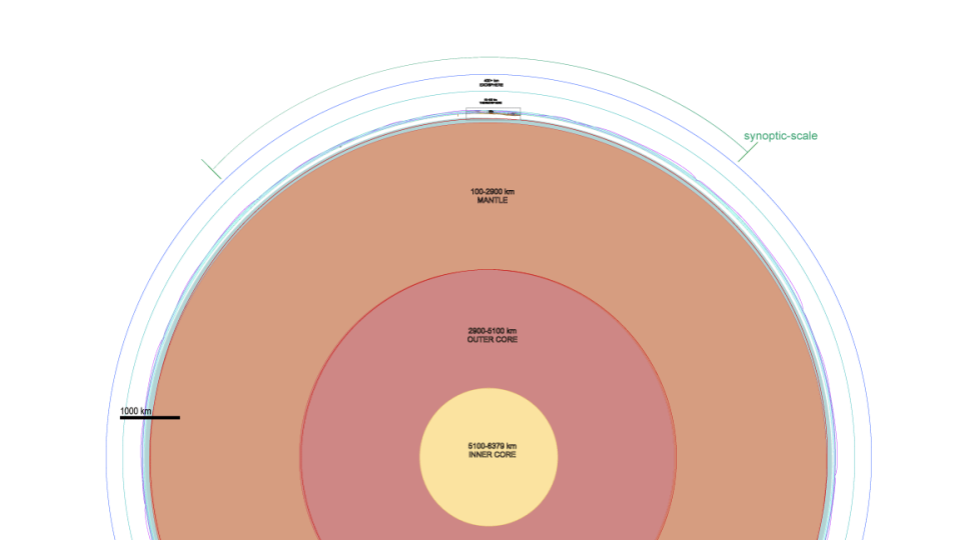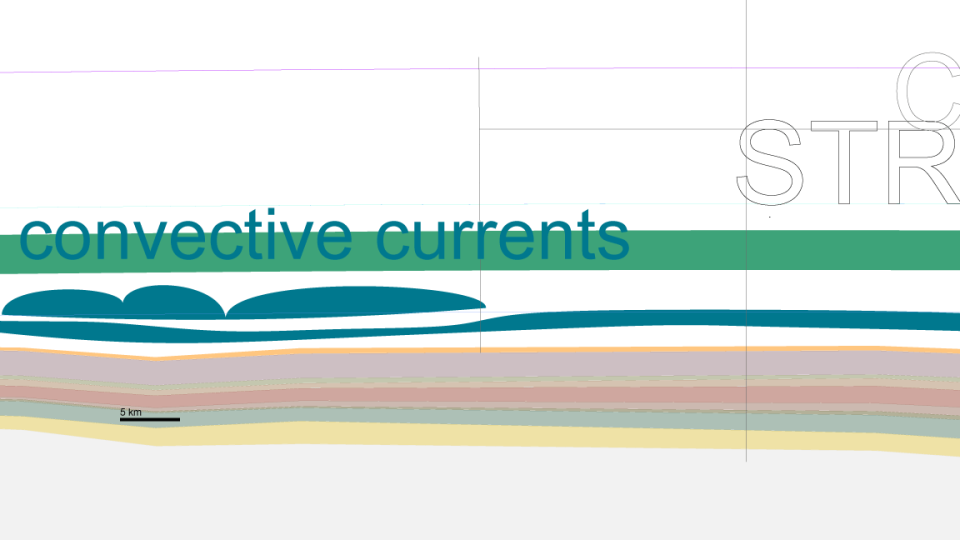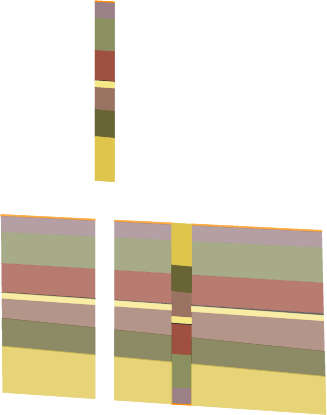Geo- and Atmo- must be understood as a continuous stack.
Geology and Atmosphere are processes that occur simultaneously at the scale of the particulate and the scale of the planet. This geo- is a multiplicity of interconnecting geos- geology, geography, geophysics, geopolitics, geofeminism. [1] Atmo- is the synthesis of all atmospheric scales: microscale, mesoscale, synoptic scale, and global scale. As apparently ephemeral as a cloud may seem [2], atmo- contains traces of every breath created here on Earth.




Drawing Geo- and Atmo- together requires the knitting together of multiple disciplines [3]; learning their strategies for collecting and analyzing evidence, and translating their data for optimal navigability. [4]


For our purpose, the stack becomes a section drawing, a slice of the earth.
This section is spatial, but also temporal, as it keeps the chronology of the planet.

Planetary chronology is disturbed by Human Nature.
Planetary Nature is regular to the Earth: accruing of matter on the surface, seasonal variation, and orbital patterns. All but orbit has been upended by human activity, affecting both the geosphere (by means of anthropogenic sediment [1] and extraction [2]) and the atmosphere (by means of the dramatically changing climate [3]).
Even the cryosphere, tempestuous and varied as a record keeper, is permanently altered as the glaciers melt. [4] Earthly matter is no longer a reliable chronology of the Planet, the present illegible to the future.

That perverted world of uncanny forces [1] is now traded for insidious forces, as the pandemic slows Human’s tendency towards production. The relationship between Human and Planetary Nature(s) is complicated again by geo-temporal events.
For the whole of our adult lives, the economic model of continuous production has apparently been at war with the natural. [2] This creates a tipping point, an edge for habitability. The pandemic brings economic precarity into relief, nudging the climate’s chronic emergency aside for more acute emergency.
The planetary scale chronic emergency that is the anthropocene is recorded in the record of time.
Will this global emergency be reflected in the deep geological record?
Orienting in the Planetary Chronology
To represent a planetary section, we begin with North and South Dakota. Standing in Minneapolis, we look towards the Dakotas. North Dakota is to our right, South Dakota is to our left. Going far enough through the earth, we arrive at the Antipode.
But we have not made a tunnel, we have cut the whole Earth, through everything on all sides, on our way from the Dakotas to their antipode, the Kerguelen Plateau. In making that cut, we cut through any number of spheres (geospheres, atmospheres, biospheres, technospheres); submarine internet cables in the Colombian trench, Walruses on Wrangel island, a glacier, the Federal Petroleum reserves, the Tianjin Municipality, a bioluminescent lagoon, a cloud of methane… all instances of planetary chronology.
By identifying the antipode, a peculiar friend, and expanding the scope until we encircle the earth, we have created a planetary section. This sectional understanding of the world is a mobilization of deep times, in terms of representation, depth, and temporality [1].
